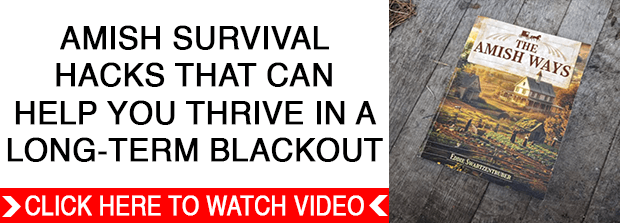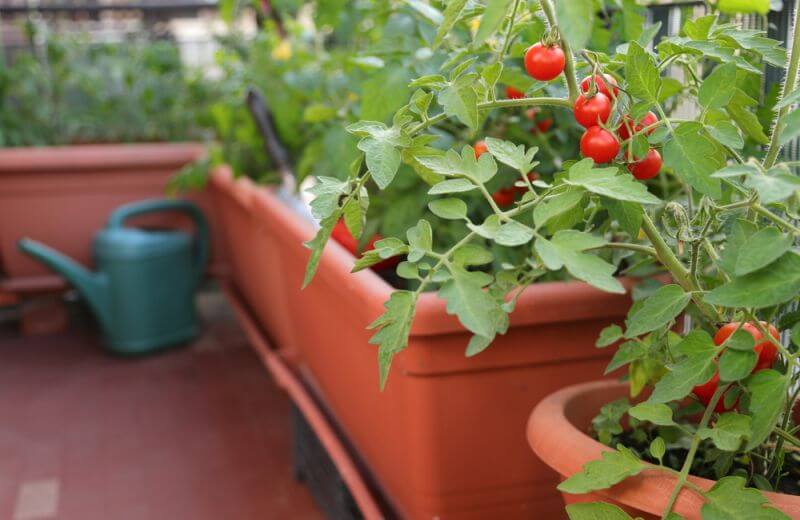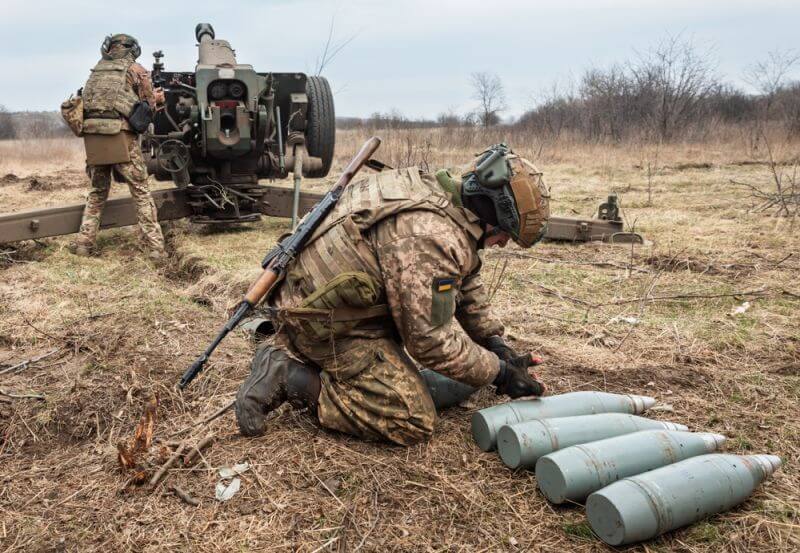I have always been concerned about the idea of growing our own food for survival. It’s not that I don’t agree with the idea of growing our own food, especially in a long-term survival situation. Rather, it’s a concern with our ability to do so. While there are always stories about people who grow all their own food in their suburban backyard, there aren’t many preppers who do. Rather, those people are a different breed than we are and really aren’t concerned about preparing for a disaster. I know, I used to live next door to one of them.
The basic problem, as I see it, is that it takes a huge vegetable garden to grow enough food to feed a family. The idea of growing enough food to feed even one person in a hydroponics tank made from an IBC or in a four-foot square vertical gaden is ludicrous. Yet both these ideas have been written about and sold to the prepping and surviving community. Whoever wrote those books has no idea just how much food it takes to survive.
There’s nothing wrong with the idea of growing our own food. In a long-term survival situation, say after a TEOTWAWKI event, that’s probably the only way any of us are going to survive past the end of our stockpiles. But we’re going to have to come up with a better way of growing food, one that we can be sure will keep out families well-fed, not on the point of starvation.
If we go back in history to the pioneering days, we find that families did grow enough food to live on. But to do so, they were growing a vegetable garden that was bigger than most people’s backyards, in addition to the 20 to 40 acres they had under cultivation in some sort of grain or other cash crops. Most of us can’t duplicate that, unless we have an actual homestead.
One of the limiting factors in growing our own food is the length of the growing season, the time from the last frost in spring to the first frost in the fall. This varies, depending on the part of the country one lives in. Growing seasons in the far north are extremely short, making it difficult to grow and harvest one complete crop. At the same time, people living in the south can experience two growing seasons, with only a few short months when it’s too cold to grow food. Strangely enough, those people have a period in mid-summer, when it can be too hot to grow anything as well.
Enter the Greenhouse
The problem of short growing seasons is nothing new, farmers and gardeners have dealt with it for centuries. All the way back in the Roman empire, the Emperor Tiberius’ (14AD to 37AD) doctor prescribed that he ingest a cucumber a day, year-round. This caused a great problem for his gardeners, who had to grow those cucumbers all year long, in a temperate climate, much like New York City or Chicago. The question was, how would they grow them in the wintertime?
The gardeners, probably with the help of some Roman engineers, came up with an ingenious solution to their problem, creating the first greenhouse in the western world. Thee were mobile greenhouses, on wheels, making it seme that they probably brought those greenhouses indoors at night. That would have been a challenge, considering their weight. Mica, which was used in place of glass, is lighter than other stones; but still heavy in quantity.
The use of greenhouses has expended exponentially since then, with greenhouses today being used by anyone from home gardeners to massive commercial flower growers. Those home gardeners mostly use them for germinating their seeds, getting a head start on the growing season. But there are a few who have taken the idea much further.
Through the years, gardeners and farmers have experimented with the basic idea of greenhouses, finding ways to make the greenhouse absorb more sunlight and convert it to heat. This has made it possible to extend the growing season even more, improving their harvest. As preppers, this should be of great interest to us.
Upping the Game to Underground Greenhouses
But if we want the ultimate greenhouse concept, so that we can grow produce year-round, what we really need to look at is an underground greenhouse. This doesn’t mean a greenhouse that is fully underground, like a bunker; but rather, one which is about ¾ underground, with only the roof and upper walls exposed. Such greenhouses might be harder to build, but they more than make up for it with the increased growing season they offer.
The main advantage that an underground greenhouse has over other greenhouses is that of insulation. The earth around it is actually excellent insulation. This might seem strange to us, in an age where we have spun fiberglass insulation in our homes. But our underground greenhouses aren’t limited to a mere 3 ½” of insulation. They have many feet of it; all of which stays at about 55°F year-round.
This means that we can literally grow citrus fruit in North Dakota, if we’re using an underground greenhouse. The 55°F temperature is warm enough to allow the citrus to grow. An added benefit is that during the warmer months, the cooler underground temperature prevents produce from spoiling.
Put plainly, with a greenhouse like this, one can grow a full gambit of fruits and vegetables year-round, proving food for their family. Granted, it might take a rather large greenhouse to do that effectively; but it is still possible; much more possible than growing enough food in half the year, to feed your family year-round.
Besides just building the greenhouse in a hole in the ground, there are other things we can do to make the underground greenhouse more efficient. First, it would be good to double glaze the roof and exposed part of the wall. Make it as airtight as possible. That will help keep the warmer air in the greenhouse inside it, rather than being dissipated into the air around the greenhouse. If it dissipates, your greenhouse won’t be warm at all.
Secondly, line the north wall of the greenhouse with black plastic barrels, filled with water. These need to be placed fairly high up, so that the sunlight coming through the roof can strike them, warming the water inside. This is easily accomplished by digging a “step” for the barrels along that wall, just high enough that the barrels will be below ground level.
Add Geothermal Heat/Cooling
It is possible to add to the overall efficiency of the underground greenhouse by adding geothermal heating or cooling. Whether it ends up being heating or cooling will depend on whether the ambient temperature of the greenhouse is warmer or cooler than the temperature underground. That means it could change throughout the seasons.
As I mentioned earlier, the temperature underground is roughly 55°F. So, running a flexible plastic pipe underground and then blowing air through it will either warm or cool that air to 55°F. The best pipe for this is a corrugated, flexible pipe about 4” in diameter. To ensure that the temperature of the earth around the pipe remains consistent, the pipe needs to be buried six feet underground.
Every 100 feet of pipe buried in this manner is equivalent to about 1,000 BTU of heating or cooling. Rather than run 200 or 300 feet of pipe in one run, it’s more efficient to run separate runs of 100 feet each. Longer runs won’t make the air coming out of the tube any warmer or colder. Make sure you use blowers that are energy efficient and have a high capacity for best overall system efficiency. Taking that a step further, install solar power to run the blowers, so that they will run even after the power goes out.
This may seem like excessive work; but if you’re going to build an underground greenhouse, you’re probably going to have to rent a backhoe or at least a trackhoe. The few extra hours to trench for geothermal heating or cooling won’t add much to the overall project.
In Conclusion
While building such an underground greenhouse would be considerably harder than building an above-ground greenhouse or gardening in raised beds, the overall impact of having the underground greenhouse will be huge. Rather than being limited to the normal growing season in whatever area you live, you’ll have three growing seasons, allowing you to grow food year-round. Of course, you’ll want your underground greenhouse to be as big as possible, so that you can grow as much food as possible, ensuring that your family will have enough to eat.
Should you find yourself in the position where you are growing more food than you can eat, you can always sell or give away the excess. In a post-disaster world, that food is better than currency and can be bartered for other things you might need, including the labor of friends, family or neighbors.









































































I wonder if a good compromise having construction economy advantages might be above ground though with a perimeter trench on flat ground filled with foam insulation? The ground enclosed will have thermal mass and walls not facing the sun can be insulated. Some savings can be put into glazing with better insulation value. Just a thought. Input invited.
[email protected]
Great article. Yes to all you said . A sunken room works and is worth the effort. . I had not thought of the water barrels. Let me add 2 possible considerations. An exposed southern sunlight facing of your glass in the winter is essential. And expanding on the concepts of warming rooms we used in winters in both Tennessee and Illinois. An insulated Glass Sunroom built into the southern facing had vented slots high in the walls leading from the house to the sunroom. When the manual vents were opened, a small excess of warm air that had risen to the ceiling would channel into the Sunroom, adding some excess house heat to the natural heat from the sun warming the room during the daytime. Our enhanced Sunrooms would stay very comfortable when the sun was shining. A process copied from sunning rooms in several ski resorts..
No word about lighting. Without light, nothing will grow normally. Especially at winter time